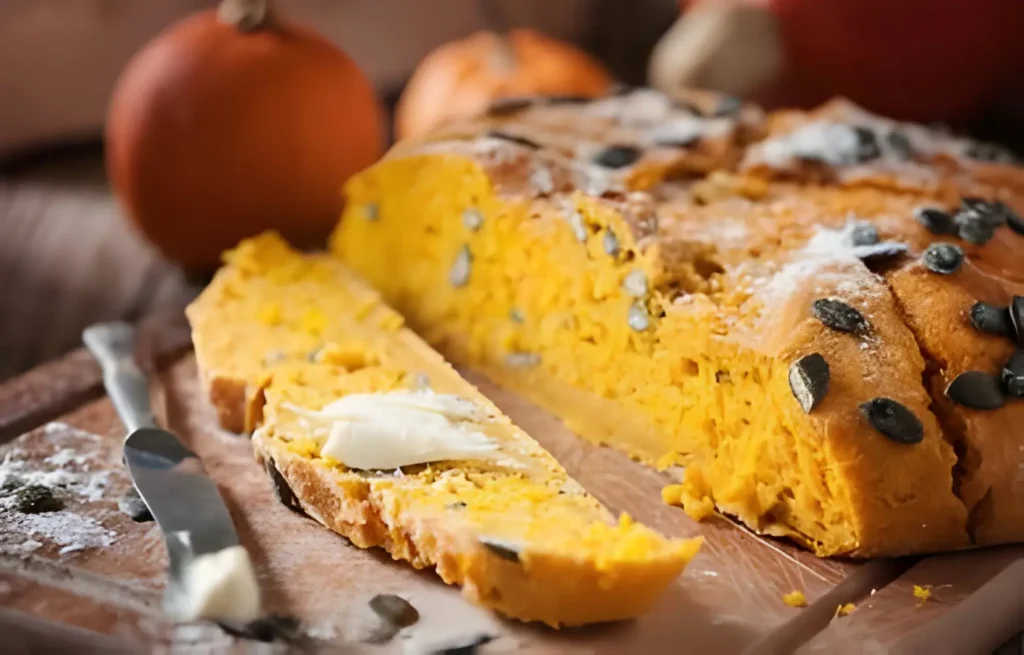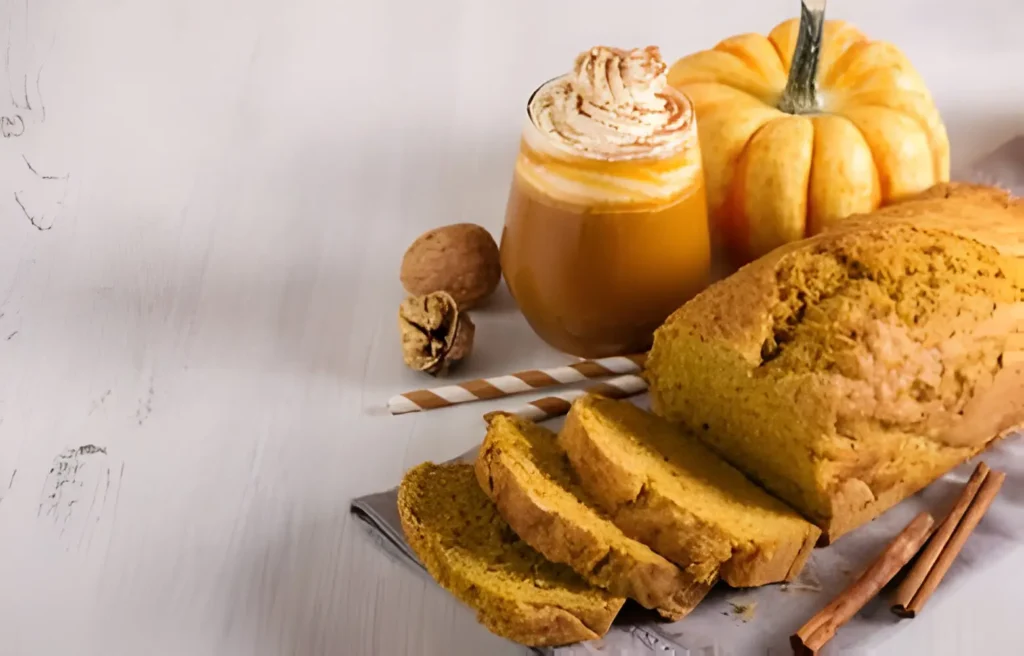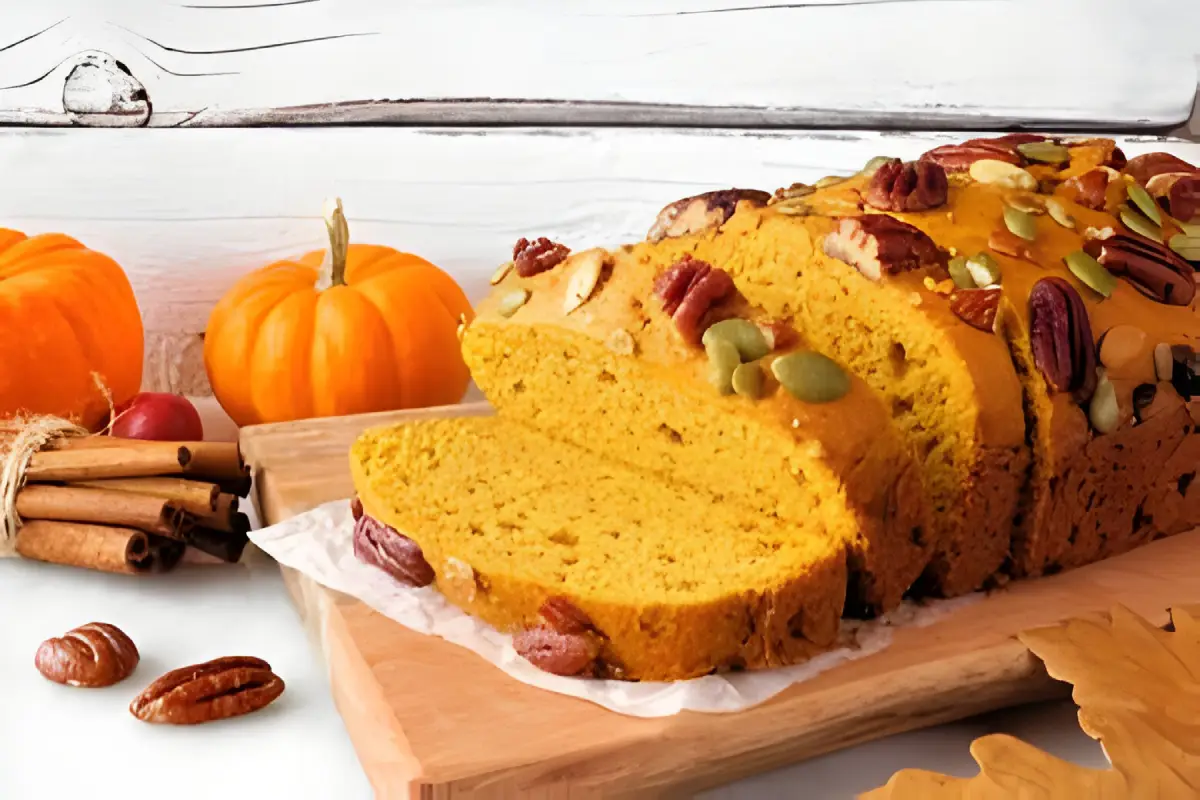Ah, the quest for the perfect slice of pumpkin bread – it’s a journey many of us embark on, especially when the leaves start to change color and the air gets that crisp autumn chill. There’s something utterly comforting about a moist, flavorful slice of pumpkin bread, isn’t there? Yet, so often, bakers find themselves asking, “Why is my pumpkin bread not moist?” It’s a culinary conundrum that can turn a delightful baking experience into a frustrating mystery.
Fear not, dear reader, for we’re about to dive deep into the heart of this issue. We’ll explore the common culprits behind dry pumpkin bread and unlock the secrets to ensuring your loaf is as moist as an autumn morning. So, grab your apron, preheat your oven, and let’s get to the bottom of this, shall we?
Identifying the Culprits Behind Dryness
When it comes to baking, moisture is key. Yet, achieving that perfect level of moistness in pumpkin bread can sometimes feel like chasing a ghost through a foggy pumpkin patch. Let’s shine a light on some of the most common reasons your pumpkin bread might be turning out drier than desired.
Incorrect Ratios of Wet to Dry Ingredients
The balance between wet and dry ingredients is like a seesaw in the playground of baking. Tip too far one way, and your bread can end up too wet or, in our case, too dry. An incorrect ratio of these ingredients is often the primary suspect in the case of dry pumpkin bread. It’s crucial to measure your ingredients accurately. Too much flour or not enough pumpkin puree can lead to a loaf that crumbles away like autumn leaves.
Overbaking
Just like a sunny day turning to rain, leaving your pumpkin bread in the oven for too long can turn a potentially moist masterpiece into a dry disappointment. Overbaking is a common mistake that sucks the moisture right out of your bread. Keep a close eye on your baking time and start checking for doneness a few minutes before the recipe suggests. Remember, ovens can vary!
Ingredient Quality and Type
Not all pumpkins are created equal, and the type of pumpkin you use can significantly affect the moisture content of your bread. Some canned pumpkin purees are denser and drier than others, while fresh pumpkin can vary in water content. Opting for a high-quality, consistent brand of canned pumpkin or choosing the right type of fresh pumpkin can make all the difference.
In the grand scheme of things, baking pumpkin bread should be a joyous occasion, not a puzzling chore. By understanding these common pitfalls, you’re already on your way to achieving that dreamy, moist loaf. Stay tuned as we delve deeper into the secrets of moist pumpkin bread in the next sections.
Tips for Ensuring Moist Pumpkin Bread

Now that we’ve uncovered the usual suspects behind dry pumpkin bread, it’s time to turn our attention to the tricks of the trade. Yes, there are secrets whispered among the baking sheets and mixing bowls that can elevate your pumpkin bread from parched to perfectly moist. Let’s dive into these golden nuggets of wisdom.
The Role of Fat
In the realm of moist pumpkin bread, fat is not just a component; it’s a hero. Incorporating the right amount of fat, be it oil or butter, into your batter is crucial. Oil, in particular, is a champion of moisture, lending a tender texture that butter can’t always match. Don’t shy away from it; embrace it for the moisture-magnet it is. Remember, a little extra fat can be the difference between a dry loaf and a moist marvel.
Choosing the Right Pumpkin
Not all heroes wear capes, and not all pumpkins yield the same moisture. The type of pumpkin you use can greatly influence your bread’s texture. For consistent results, canned pumpkin puree (look for 100% pure pumpkin) is often recommended due to its uniform water content. However, if you’re feeling adventurous and prefer fresh pumpkin, opt for sugar pumpkins or pie pumpkins. These varieties are less watery than their jack-o’-lantern cousins and packed with sweet, concentrated pumpkin flavor.
Baking Techniques
Even the best ingredients can fall flat without the right techniques. To keep your pumpkin bread moist, consider lowering your oven temperature slightly and baking for a longer period. This gentle approach allows the bread to cook through without losing its precious moisture. Additionally, employ the toothpick test for doneness—insert a toothpick into the center of the loaf; if it comes out clean or with a few moist crumbs, your bread is ready to leave the heat behind.
Armed with these tips, you’re well on your way to baking pumpkin bread that’s as moist as a dew-kissed autumn morning. But the journey doesn’t end here. Up next, we’ll explore how tweaking your recipe can further ensure your pumpkin bread remains a beacon of moistness in a sea of dry loaves. Stay tuned, and keep that oven warm!
Recipe Adjustments for Moisture

Achieving the pinnacle of moistness in pumpkin bread isn’t just about avoiding pitfalls; it’s also about embracing recipe adjustments with open arms. Sometimes, a little tweak here and there is all it takes to transform your loaf from the Sahara desert to the Amazon rainforest. Let’s explore some adjustments that can make all the difference.
Adjusting Wet Ingredients
The road to moist pumpkin bread is paved with the right balance of wet ingredients. If your bread has been consistently dry, consider increasing the amount of pumpkin puree slightly. Pumpkin puree isn’t just for flavor; it’s a vital source of moisture. Additionally, don’t overlook the power of other moist-makers like applesauce, sour cream, or yogurt. These can be added in small amounts to introduce extra moisture without compromising the bread’s structure.
Incorporating Add-ins
Sometimes, the secret to moisture lies in the company your main ingredients keep. Add-ins like chopped nuts or chocolate chips can actually help retain moisture within the bread. But here’s a pro tip: coat these add-ins lightly in flour before mixing them into your batter. This little trick prevents them from sinking to the bottom and helps distribute moisture evenly throughout the loaf.
Embracing these recipe adjustments can lead to a significant improvement in your pumpkin bread’s moisture level. Remember, baking is as much an art as it is a science. Don’t be afraid to experiment with these tweaks to find the perfect balance for your taste and texture preferences.
As we continue our journey towards the perfect slice of pumpkin bread, remember that every baker’s path may vary. What works wonders for one may need adjustment for another. The key is to keep experimenting, keep baking, and keep savoring the delicious rewards of your efforts. Up next, we’ll address some of the most burning questions bakers have about making pumpkin bread, so stay tuned and keep that mixer ready!
Addressing Common Questions
In our quest for the perfect pumpkin bread, questions abound. From ingredient swaps to storage tips, bakers everywhere seek answers. Let’s dive into some of the most frequently asked questions and shed light on these doughy dilemmas.
Can I Use Fresh Pumpkin Instead of Canned?
Absolutely! While canned pumpkin offers consistency and convenience, fresh pumpkin can be used to add a unique touch to your bread. Opt for sugar pumpkins or pie pumpkins, as they’re less watery and more flavorful than their larger counterparts. Just remember to cook and puree the pumpkin before adding it to your batter. This extra step ensures a smooth, even texture and a moist, delicious loaf.
Why Does My Pumpkin Bread Crack on Top?
A crack down the center of your pumpkin bread isn’t just normal; it’s a sign of a well-risen loaf. As the bread bakes, the exterior sets before the interior does. The inside continues to rise, causing the top to crack. This phenomenon is a baker’s badge of honor, indicating that your loaf has achieved the desired lift. Embrace the crack as a natural, beautiful part of the baking process.
How Can I Store Pumpkin Bread to Keep It Moist?
Proper storage is key to maintaining your pumpkin bread’s moisture. Once completely cooled, wrap the bread tightly in plastic wrap or aluminum foil. For added protection, you can then place it in a resealable plastic bag. Stored at room temperature, your bread will stay moist and delicious for several days. If you’d like to keep it longer, pumpkin bread freezes beautifully. Wrap it as described above, and freeze for up to three months. Thaw at room temperature when you’re ready to enjoy a slice of autumnal bliss.
With these questions answered, you’re better equipped to tackle the world of pumpkin bread baking. Remember, every baking journey is unique, filled with its own set of challenges and triumphs. Keep experimenting, keep learning, and most importantly, keep enjoying the delicious fruits of your labor.
As we wrap up our comprehensive guide to achieving moist pumpkin bread, remember that the journey doesn’t end here. The world of baking is vast and full of endless possibilities. Continue to explore, experiment, and share the warmth of your kitchen creations with those you love.
Conclusion: Achieving the Perfect Slice of Pumpkin Bread
As our journey through the art and science of baking moist pumpkin bread comes to a close, it’s clear that the path to perfection is paved with knowledge, experimentation, and a dash of culinary curiosity. From understanding the common causes of dryness to implementing strategic recipe adjustments, we’ve explored the depths of what it takes to achieve that coveted moist and tender loaf.
Baking is a journey of discovery, where each ingredient plays a crucial role, and every technique can make a difference. We’ve learned that the balance of wet and dry ingredients, the choice of fats, and even the type of pumpkin used can significantly impact the outcome of our bread. Moreover, we’ve tackled some of the most pressing questions bakers face, providing insights and solutions to ensure your pumpkin bread is nothing short of spectacular.
As you continue to bake and share your delicious creations, remember that each loaf is a reflection of your passion and creativity. Don’t be afraid to experiment with adjustments and add-ins, and always embrace the learning process that comes with each batch. The quest for the perfect pumpkin bread is a rewarding one, filled with the sweet aroma of success and the warmth of homemade goodness.
Thank you for joining me on this flavorful exploration. May your kitchen be filled with the joy of baking, and may your pumpkin bread always be moist, tender, and irresistibly delicious. Here’s to many more baking adventures ahead!

